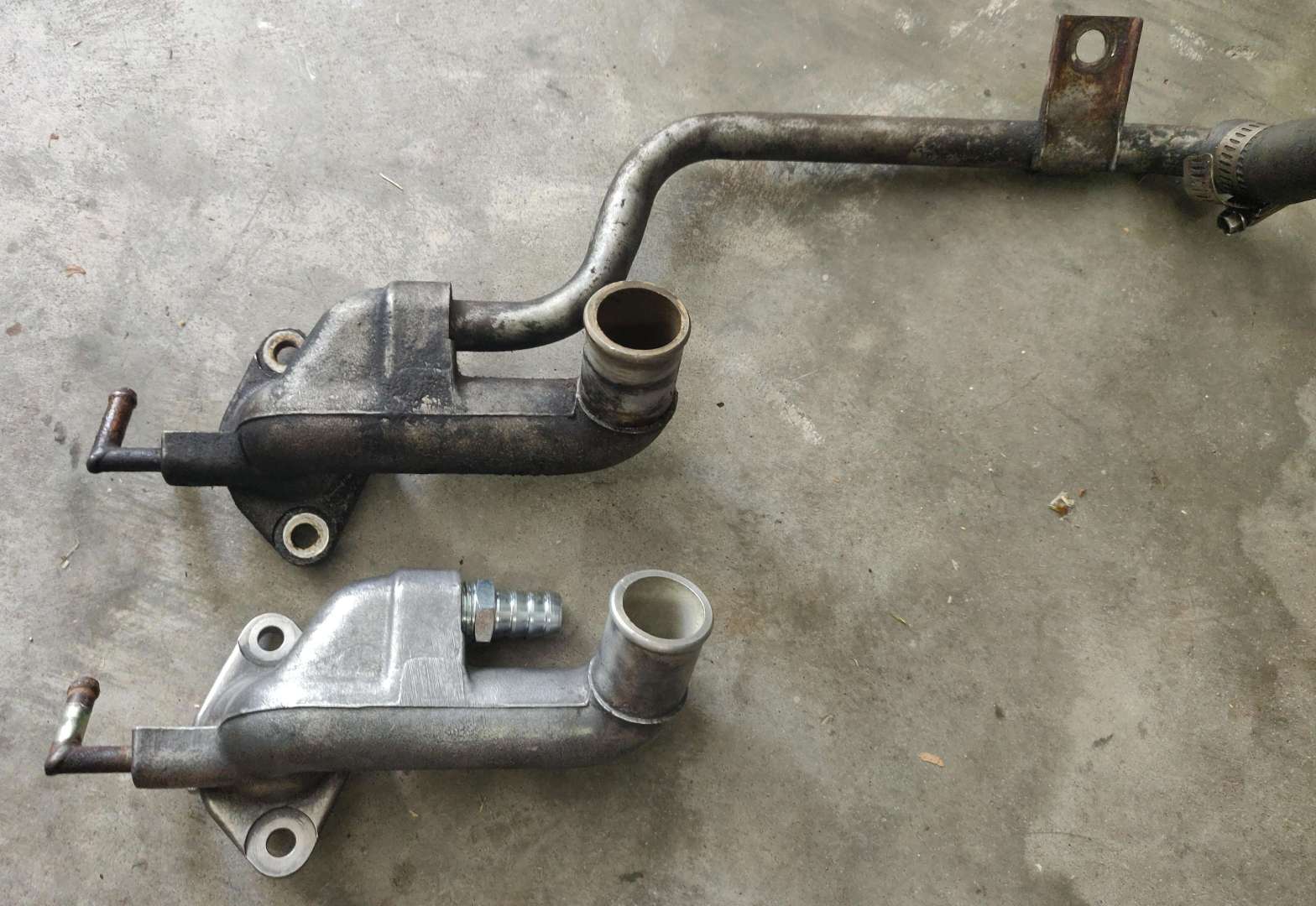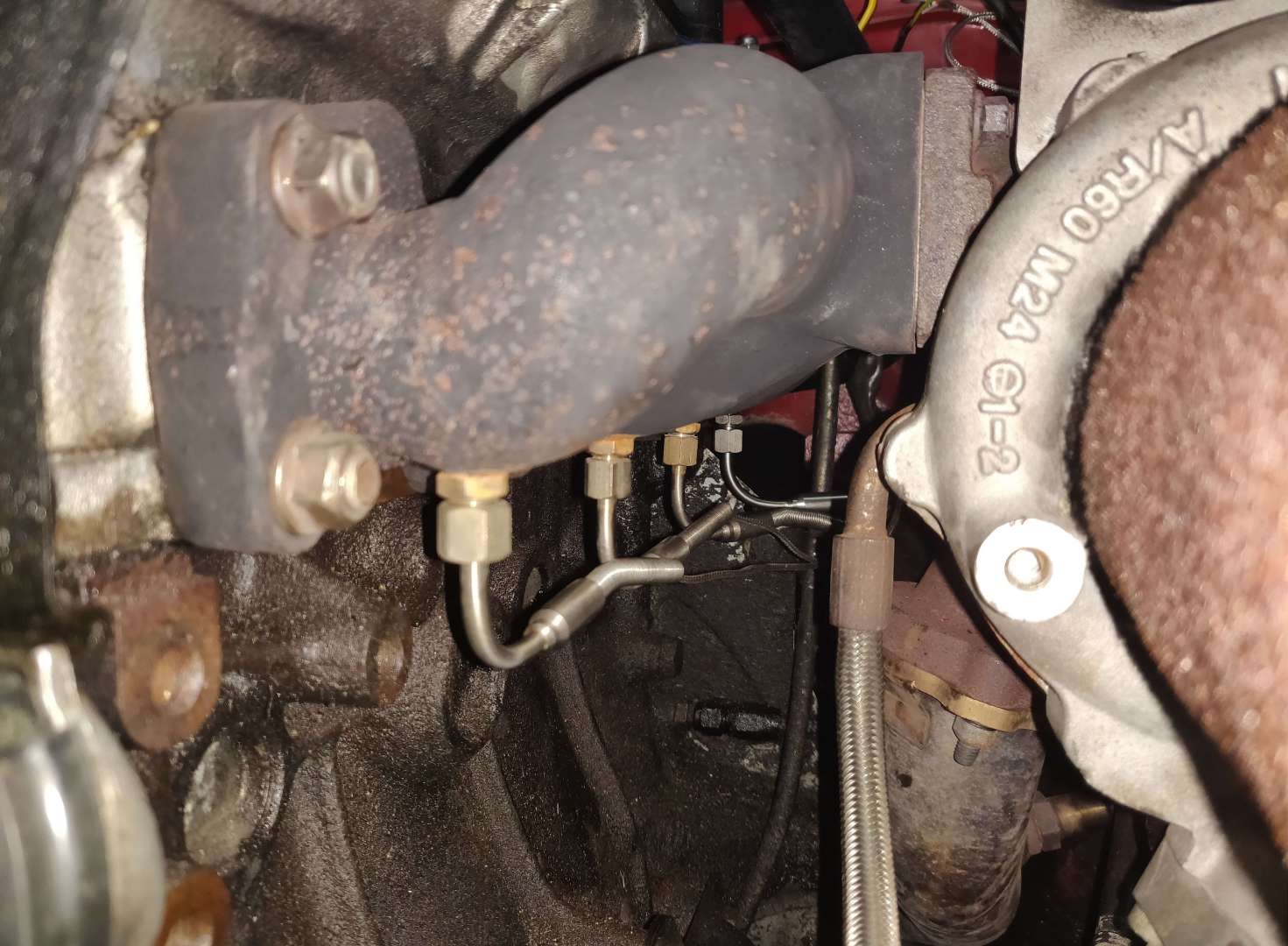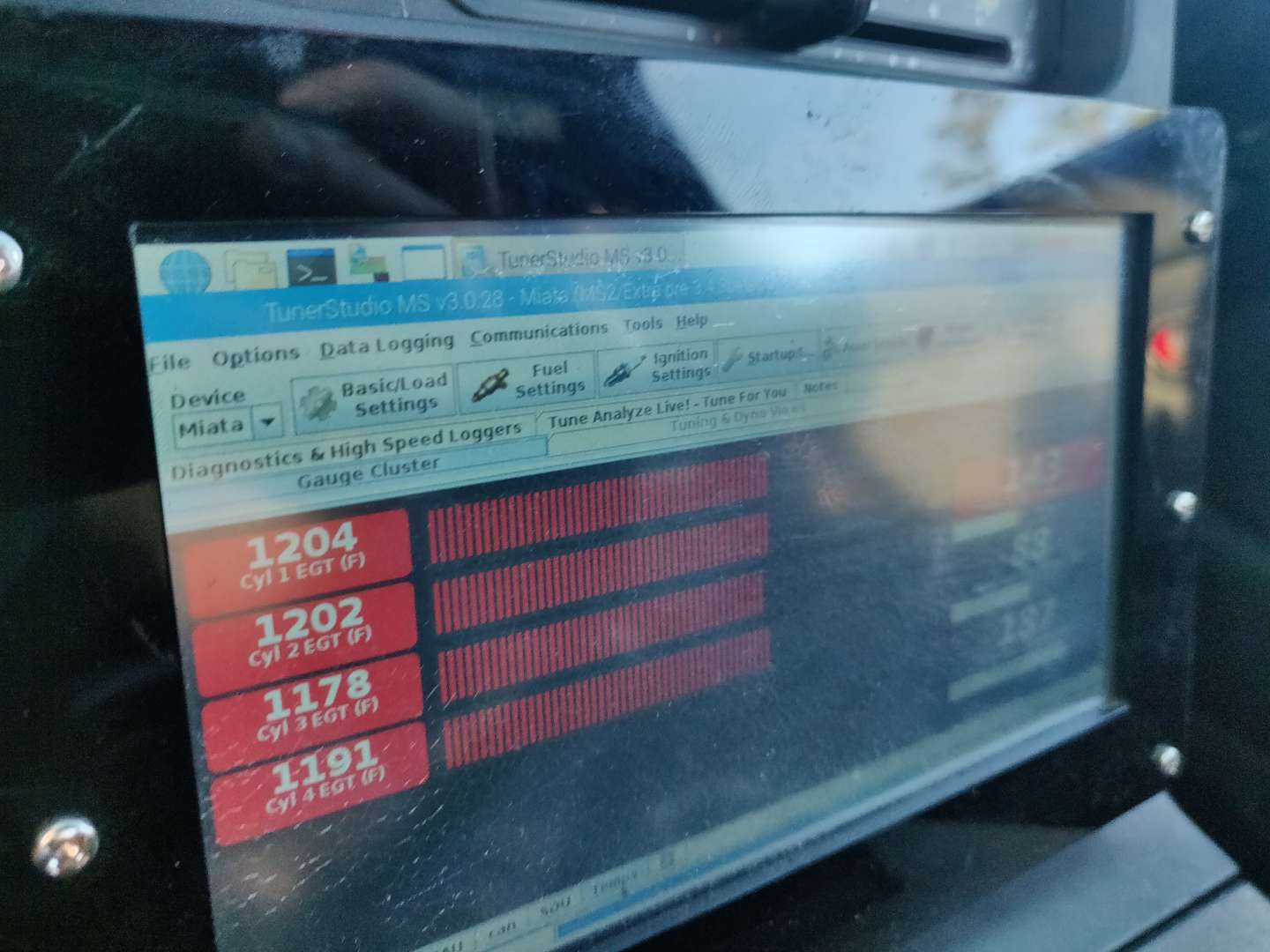I few years back, I took a DIY approach to installing exhaust gas temperature (EGT) sensors in the turbo miata. I bought a set of k-type thermocouples off of ebay, and some MAX6675 signal conditioning boards. I wired up an Arduino mini, and an MCP2515 to send the data over CAN to the megasquirt ECU.
The problem I hit with the install, was the #4 EGT probe couldn’t be installed because of the heater core hard line blocking where I drilled for the sensor.

It only took me about 3 years to do it, but I finally rerouted the hardline with a regular piece of heater hose. I got another coolant neck at the junkyard and JB-Welded a barb fitting into it. I’ve been experimenting with using JB-Weld in high-heat applications, and I’ve been pretty pleased with the results. Here’s the old vs new coolant neck side-by-side.

Once the new neck was installed, I could finally install the 4th EGT probe into the exhaust manifold.

Here’s what a few years of heat will do to a 3D printed part. I’m pretty sure I made this box out of PETG filament. PETG has a higher melting point than PLA, but not as high as ABS, which would probably be the best (if only my printer could handle ABS…).

I ended up remaking the enclosure because I couldn’t stand how annoying the old design was to take off the EGT probes. I didn’t take any photos of the new box, but I just made a larger slot to access the screw terminals for the sensors. Here’s the CAD drawing.

Test Drive
With everything installed and put back together, it was ready for a test drive to see how well the EGT sensors work.
Light-load EGTs are average 1190 F (highway driving at about 60mph).

High-load EGTs are average 1280 F.

-Dan
Load Comments